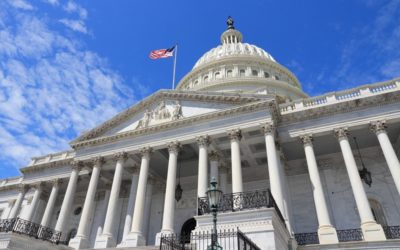Unemployment is at or near a record low. Hospitality business owners are looking for new tools to attract and retain a robust workforce. One tool often left unutilized is an employer sponsored qualified retirement plan under section 401(k), or 401(k) plan. These plans allow employees who participate in the plan to save for their future retirement and reduce or defer the amount of income tax owed each year. If utilized properly, a 401(k) plan may be a great tool to build a strong team. Offering an opportunity to participate in these plans may be valuable to many employees, but there are a few pitfalls that should be avoided. If you are thinking of starting a plan, here are a few things to consider.
Sponsor Responsibility
Operating a benefit plan means being accountable for it. 401(k) plans are sponsored by a business and have named plan trustees. As a Trustee, you have fiduciary duties representing the interest of all plan participants and must keep their best interests in mind. These duties include:
- Meeting with advisors
- Monitoring investments and fees
- Remitting payroll withholding in a timely manner
- Verifying employees are vesting in the plan correctly
- Ensuring wages eligible for withholding are being calculated correctly
Ultimately, as the plan trustee and sponsor, you have the obligation to ensure the plan is operating in accordance with plan documents provided to your employees. Failing to perform these duties correctly may lead to required corrections to employees and penalties from the Department of Labor (DOL). If left unidentified or uncorrected, these costs may add up quickly. Working with a good third party administrator will save you time and help maintain your plan processes.
Employee Participation
If you elect to sponsor a 401(k), or if you already sponsor a plan, ensure your employees are aware of it. If your employees are not aware of the benefits, it is not really benefitting anyone. Also, be conscious that you are required to communicate with all eligible employees whether they have elected to participate or not. This is why adopting the correct plan is important.
Turnover in the hospitality industry is extremely high (73.8% in the hotel/motel industry per the DOL and statistics), so you likely do not want to waste time enrolling employees who are going to leave within a few months. The good news is the plan may restrict eligibility to employees who have worked for the business for a specific period of time and have worked a minimum number of hours within that time period. You may also set different enrollment criteria for salary employees, such as management and other hourly employees. 401(k) plans offer great flexibility regarding plan eligibility, but it is important to establish a suitable plan structure and follow the plan documents.
Employee participation throughout the business is important. While you can be selective with the criteria for eligibility for plan participation, these plans are designed to benefit all employees so restricting eligibility to owners or top management is not generally permitted. Part of the trustee’s responsibility is to ensure the plan is not ‘top-heavy,’ or have too large of share of plan assets held by owners and key employees. There are several ways to prevent this, but the easiest and most beneficial is to get as many employees to participate. When starting a plan, there are options for automatic enrollment, in which employees are enrolled automatically unless they specifically elect not to, which typically increases participation.
Cost
There are two components regarding cost to a business in a 401(k) plan:
- The first is the cost of administration. Starting and administering a 401(k) does cost money, but it may not be as much as many business owners believe. Costs of plan administration are actually decreasing due to competition by plan custodians (investment brokers) who benefit from these investments under management. The incentive of more investments and therefore more investment fees means more competitive plan administration expenses. Administrative costs are not also required to be incurred by the business. Administrative costs for a plan may be paid by the plan sponsor, the plan participants or split between the two parties. More participants in the plan will also spread any costs paid by the plan over a larger group and therefore should be less cost per participant. These decisions will be include in plan documents and once again it is imperative the plan be administered in accordance with plan documents. Plan administration costs may increase when your plan reaches a certain size because the DOL may require an annual audit. If your plan has more than 100 employees eligible to participate (including employees eligible but not participating), speak to your plan administrator or other professional about ensuring your plan is in compliance with DOL regulations.
- The second component of cost relates to employer contributions to employee accounts. Generally, there is no requirement to make contributions to employee’s accounts. However, providing this additional incentive is a great way to get more employees to participate in the plan. Many employers incentivize employee participation in the form of a matching contribution. Matching contributions may be dollar for dollar or a fraction of employee contributions and capped at a maximum rate. Employers may also choose a standard contribution to eligible employees regardless of participation, or contribute based on years of experience and a variety of other ways. This benefit is typically paid to employee’s working over 1,000 during a year and employed at year end, and only paid to employees who have been employed longer than one year. Owners do not pay for short-term employment. They only contribute to employees who add value to the business. Employer contributions are subject to the plan’s stated vesting schedule, or stated term of employment before employees are eligible to keep employer contributions. Vesting is typically earned over a range of three to six years of service to the company. While employer contributions are not a required expense, it may be considered the largest benefit to having a plan, and many employers also feel good about helping their employees to save for retirement. In addition vesting incentivizes employees to stay with the company. Both administrative costs and employer contribution costs can be managed by utilizing the significant flexibility allowed under the 401(k) Plan structure.
Offering a retirement plan in a benefits package may help attract and retain talented employees and there is tremendous flexibility within plan regulations to allow businesses to implement and afford a plan that works for both the business and its employees. The underlying theme to successfully administering a retirement plan oversight by custodians, good communication with eligible employees and participants, and most of all, administering the plan in accordance with plan documents. These factors will keep a plan on the right track, keeping the plan affordable for employers and attractive for employees.
Retirement plan compliance is complex, requiring help from trusted professionals who understand the challenges, rewards and opportunities associated with effective retirement planning. For more information about the above tips or to learn about how we can help, please contact a Smith Schafer professional.



